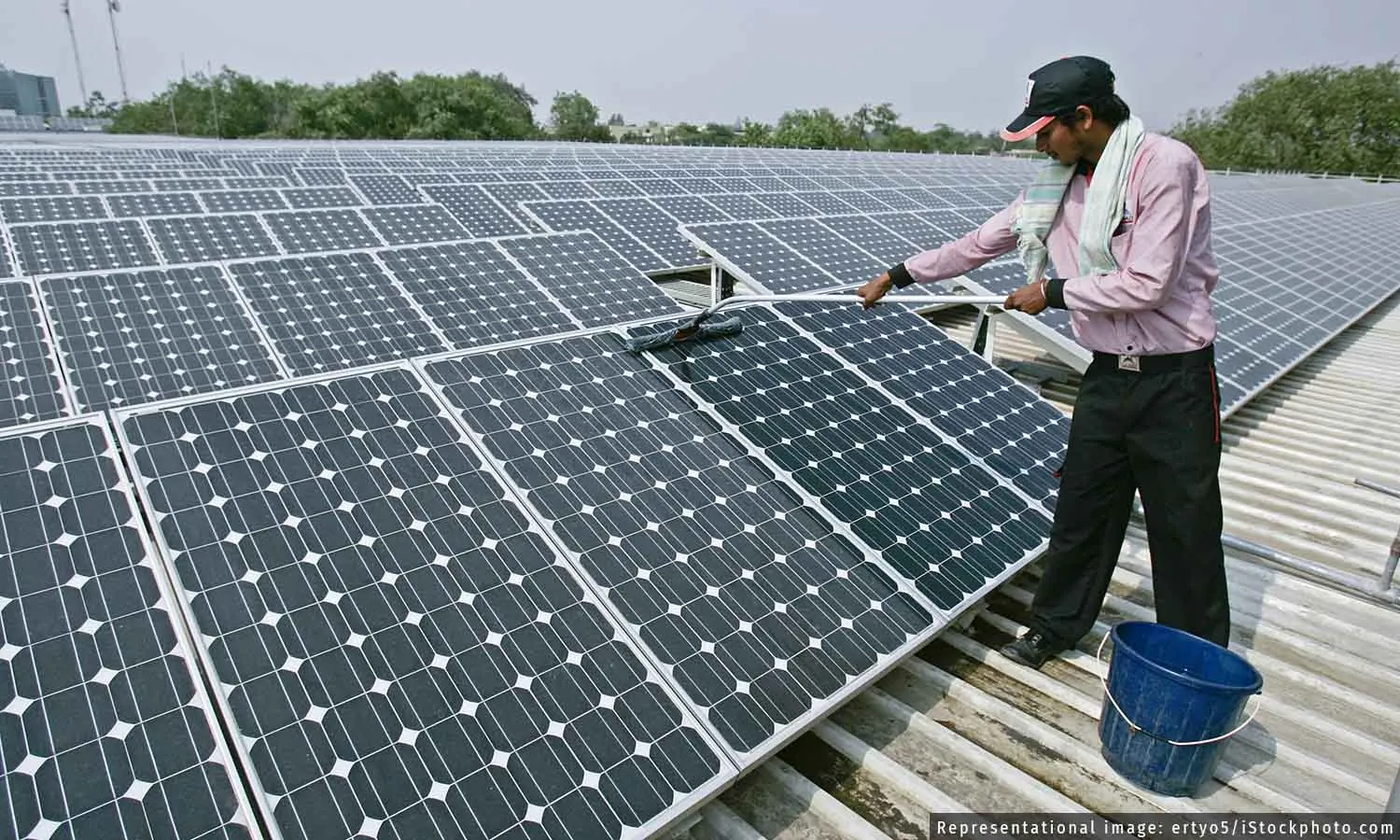As Bihar, Odisha Miss 2022 Renewable Energy Goals, Experts Say States Should Finance A Green Economy
Funding a clean energy transition can help these states green their economic growth by curbing emissions, create social development through green job creation, and benefit economically by meeting the industrial demand for energy

Delhi: Bihar's greenhouse gas (GHG) emissions have doubled between 2005 and 2018, and of these 65% are from the energy sector. Odisha's emissions have increased 2.5 times in the same duration, of which the energy sector makes for 92%. Yet, both states missed their renewable energy targets for 2022, according to an analysis of their renewable energy policies and other government documents.
The Union budget for 2023-24, announced on February 1, allocated Rs 10,222 crore to the Ministry of New and Renewable Energy, an increase of 45.3% from the revised estimates of the 2022-23 budget. This includes doubling the budget for the central schemes for solar energy and for a green energy corridor.
In line with these increases, Bihar and Odisha too need to ramp up spending on renewable energy. Funding a clean energy transition can help these states green their economic growth by curbing emissions, create social development through green job creation, and benefit economically by meeting the industrial demand for energy, experts say.
At a roundtable organised on green growth in Patna, Prabhat P. Ghosh, member secretary of the Asian Development Research Institute (ADRI), said, "Climate change should not be seen as a future event by Bihar, it should be looked at as an on-going epidemic, like COVID-19, so that the state can start working towards mitigating it in the present itself."
For this, state governments need effective public financing for climate mitigation interventions, such as renewable energy, experts say and data show.
Bihar had achieved 11% and Odisha 23% of their renewable energy targets by 2022, as per data from the Ministry of New and Renewable Energy. Odisha released a new renewable energy policy in 2022, which does not mention these targets.
Less Than 1% Spent On Renewable Energy
Both states spend less than 1% of their total budget on renewable energy.
COVID-19 further stressed state finances. In Odisha, the energy sector budget as well as the renewable energy budget fell in 2020-21, but rose again when the revised budget estimates were provided for 2021-22. Yet, the revised budget for 2021-22 for the renewable energy sector is lower than the actual spending in 2018-19.
For Bihar, renewable energy budgets have increased, even when the energy sector budget as a whole reduced in 2020-21.
Furthermore, the funding for the key agency for renewable projects, the Indian Renewable Energy Development Agency (IREDA), which provides Internal Extra Budgetary Resource support to states for RE promotion, has been poor, particularly in the case of Bihar, an analysis of IREDA documents shows.
Next steps for renewable energy expansion
The fact that the states have renewable energy policies is a start, experts say.
"The recent renewable energy policy and industrial policy are clear indications of the state's intent to green the power sector," said Ashok Chaudhary, ex-director of the Odisha Renewable Energy Development Agency (OREDA), at a roundtable organised by the Centre For Budget And Governance Accountability in November 2022. He added that diligent planning by the energy department could provide direction to the policy.
But most existing strategies are not backed by long-term plans regarding financing of climate mitigation, the analysis of budget documents shows. For a green economy, each sectoral policy needs to mainstream concerns of climate change, environmental sustainability and inclusivity. For example, investing in a skilled workforce for renewable power or making adopting green energy through solar pumps a part of the government push for sustainable agriculture.
Two major issues with increasing decentralised or localised renewable energy capacity, such as through solar based dryers, heaters and solar pumps, are uninterested consumers and poor operation and maintenance services for decentralised renewable energy, said Radhakrishna Panda from Odisha, who is associated with Ernst and Young (E&Y) and CTRAN Consulting Private Limited that provides consultancy on issues of infrastructure, energy and environment. There is also a lack of a skilled workforce on the ground, Panda said, adding that both states should design a training programme for technicians, under the rural livelihood promotion and skill development missions, for the renewable energy industry. The Bihar government has launched initial courses through its Bihar Skill Development Mission, but enrolment has been low, Panda said.
Other challenges in Bihar include high electricity distribution losses, high cost of land for large solar projects, and lack of evacuation infrastructure.
We have reached out to both the Odisha and the Bihar state government for their comment on the targets for renewable energy, the failure to achieve those and climate financing plans for the next budget. We also asked them about the plan to ramp up renewable energy capacity in the state, and will update the story when we receive a response.
Correction: An earlier version of this article incorrectly said that both Bihar and Odisha spend less than 1% of their energy budget on renewable energy. The correct statement is that both states spend less than 1% of their total budget on renewable energy.
We welcome feedback. Please write to respond@indiaspend.org. We reserve the right to edit responses for language and grammar.


